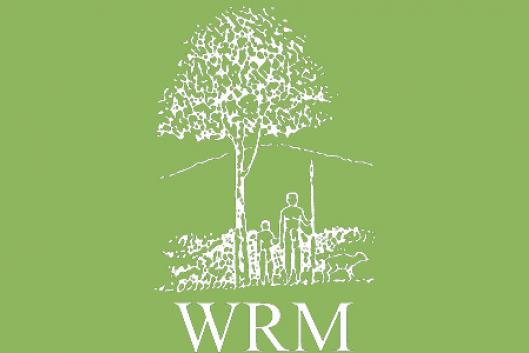In a recent outburst of “environmental enthusiasm” stimulated by generous financial offerings from the Global Environment Facility, the Thai government has been creating national parks as fast as the Royal Forest Department can map them. Ten years ago there was barely a park to be found in Thailand, and because those few that existed were unmarked "paper parks," few Thais even knew they were there. Now there are 114 land parks and 24 marine parks on the map. Almost twenty-five thousand square kilometers, most of which are occupied by hill and fishing tribes, are now managed by the forest department as protected areas.
The Karen are the most populous of six tribes found in the lush, mountainous reaches of far northern Thailand. Khon Noi, a matriarch of a remote mountain village, huddles next to an open-pit stove in the loose, brightly colored clothes that identify her. Her village of sixty five families has been in the same wide valley for over two hundred years. She chews betel, spitting its bright red juice into the fire, and speaks softly through black teeth. "The government has no idea who I am," she says. "The only person in the village they know by name is the 'headman' they appointed to represent us in government negotiations. They were here last week, in military uniforms, to tell us we could no longer practice rotational agriculture in this valley. If they knew that someone here was saying bad things about them they would come back again and move us out."
"Men in uniform just appeared one day, out of nowhere, showing their guns," Kohn Noi recalls, "and telling us that we were now living in a national park. That was the first we knew of it. Our own guns were confiscated . . . no more hunting, no more trapping, no more snaring, and no more ‘slash and burn.’ That's what they call our agriculture. We call it crop rotation and we've been doing it in this valley for over two hundred years. Soon we will be forced to sell rice to pay for greens and legumes we are no longer allowed to grow here. Hunting we can live without, as we raise chickens, pigs, and buffalo. But rotational farming is our way of life."
In November 2004, six thousand conservationists attended the World Conservation Congress in Bangkok. At that conference and elsewhere, big conservation has denied that they are party to the evictions while generating reams of promotional material about their affection for, and close relationships with, indigenous peoples. Financial support for international conservation has in recent years expanded well beyond the individuals and family foundations that seeded the movement to include very large foundations like Ford, MacArthur, and Gordon and Betty Moore, as well as the World Bank, its Global Environment Facility, foreign governments, USAID, a host of bilateral and multilateral banks, and transnational corporations. During the 1990s USAID alone pumped almost $300 million into the international conservation movement, which it had come to regard as a vital adjunct to economic prosperity. The five largest conservation organizations, Conservation International (CI), The Nature Conservancy (TNC), and World WildlifeFund (WWF) among them, absorbed over 70 percent of that expenditure. Indigenous communities received none of it. The Moore Foundation made a singular ten-year commitment of nearly $280 million, the largest environmental grant in history, to just one organization --Conservation International. And all of the big international NGOs (BINGOs) have become increasingly corporate in recent years, both in orientation and affiliation. The Nature Conservancy now boasts almost two thousand corporate sponsors, while Conservation International has received about $9 million from its two hundred fifty corporate "partners."
With that kind of financial and political leverage, as well as chapters in almost every country of the world, millions of loyal members, and nine-figure budgets, CI, WWF, and TNC have undertaken a hugely expanded global push to increase the number of so-called protected areas (PAs) --parks, reserves, wildlife sanctuaries, and corridors created to preserve biological diversity. In 1962, there were some 1,000 official PAs worldwide. Today there are 108,000, with more being added every day. The total area of land now under conservation protection worldwide has doubled since 1990, when the World Parks Commission set a goal of protecting 10 percent of the planet's surface. That goal has been exceeded, with over 12 percent of all land, a total area of 11.75 million square miles, now protected.
More and more conservationists seem to be wondering how, after setting aside a "protected" land mass the size of Africa, global biodiversity continues to decline. Might there be something terribly wrong with this plan—particularly after the Convention on Biological Diversity has documented the astounding fact that in Africa, where so many parks and reserves have been created and where indigenous evictions run highest, 90 percent of biodiversity lies outside of protected areas?
Market-based solutions put forth by concerned groups, which may have been implemented with the best of social and ecological intentions, share a lamentable outcome, barely discernible behind a smoke screen of slick promotion. In almost every case indigenous people are moved into the money economy without the means to participate in it fully. They become permanently indentured as park rangers (never wardens), porters, waiters, harvesters, or, if they manage to learn a European language, ecotour guides. Under this model, "conservation" edges ever closer to "development," while native communities are assimilated into the lowest ranks of national cultures.
It should be no surprise, then, that tribal peoples regard conservationists as just another colonizer --an extension of the deadening forces of economic and cultural hegemony.
If we want to preserve biodiversity in the far reaches of the globe, places that are in many cases still occupied by indigenous people living in ways that are ecologically sustainable, history is showing us that the dumbest thing we can do is kick them out.
Adapted from “Conservation Refugees”, by Mark Dowie, The Orion Society, November December 2005, http://www.oriononline.org/pages/om/05-6om/Dowie.html
